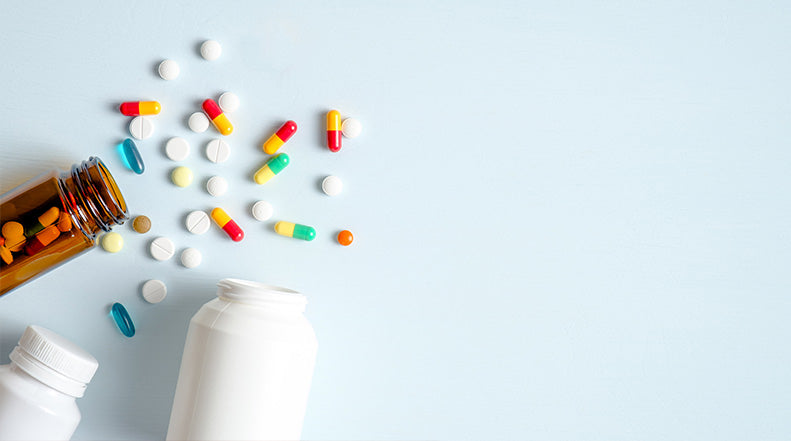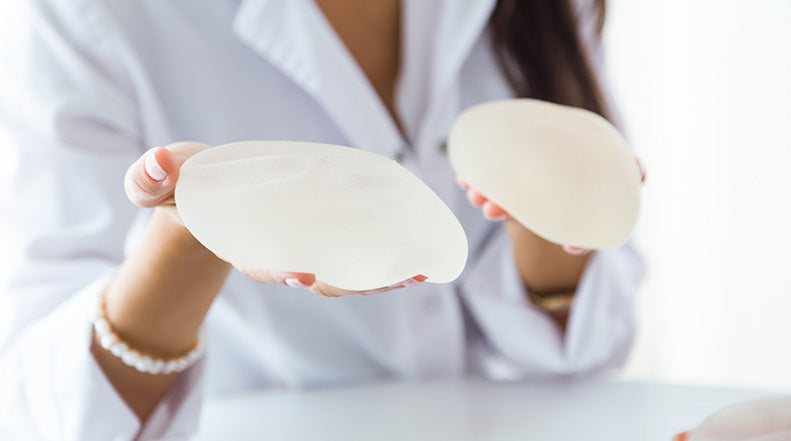5 Medications that Could Affect Your Scars Healing Process

The pharmaceutical industry makes more than 500 billion dollars in profits each year, and continues to grow year after year as new medications are developed to treat various conditions and diseases. People rely on medications to treat many different ailments, from something as simple as the common cold to more serious conditions, like heart disease. While medications can certainly help patients to regain their health, the adverse effects of these medications must also be considered.
Today we’re going to look at medications that affect scar formation due to adverse effects that relate to wound healing. There are five primary classes of medications that actively inhibit the wound healing process: blood thinners (anticoagulants/antiplatelets), anti-cancer medications (antineoplastics), immunosuppressants, corticosteroids, and NSAIDs. Keep reading below to learn more about how each of these classes of medications affect scar formation by interfering with wound healing.
BLOOD THINNERS
The term “blood thinner” is a common term used to describe two classes of medications: antiplatelets and anticoagulants. Both of these classes affect the process of blood coagulation (clotting), but work by inhibiting different pathways of this process. Antiplatelet drugs inhibit platelet aggregation (clumping together), whereas anticoagulants inhibit the coagulation cascade by targeting specific clotting factors, which occurs after the initial platelet aggregation. The goal of therapy with these types of medications is to prevent blood clots from forming where they are not supposed to, such as in the vessels supplying blood to the heart or the brain, which would lead to a heart attack or a stroke, respectively.
The problem with blood thinners is that by interfering with coagulation, there is an increased risk of bleeding. When you get a cut or scrape, coagulation should result in hemostasis, which is the cessation of blood loss from a damaged vessel, followed by repair. By inhibiting the pathways of coagulation, the body is not able to stop the bleeding as quickly as it normally would. This risk must be weighed with the benefits of preventing serious consequence such as heart attacks, strokes, and pulmonary embolisms.
ANTINEOPLASTICS
Most antineoplastics, or anti-cancer drugs, are designed to inhibit cellular metabolism, rapid cell division, and angiogenesis in order to prevent tumor growth. However, this also leads to the inhibition of many of the pathways that are critical to appropriate wound repair. These drugs also work by decreasing important components in the blood, such as white blood cells, red blood cells, and platelets. Thus, wounds can be left vulnerable to infection and excessive bleeding, as well as decreased oxygen delivery to the wound site.
IMMUNOSUPPRESSANTS
An immunosuppressant is any drug that inhibits or prevents activity of the immune system. You may be wondering why anyone would want to suppress the immune system; that’s what helps us to fight off foreign invaders and prevent disease, right? This is true, but there are some people that have overactive immune systems, such as those with autoimmune diseases like rheumatoid arthritis or multiple sclerosis. The problem is that most immunosuppressants don’t take a targeted approach to treatment. Rather, they shut down the body’s entire immune system. While this will help to treat autoimmune diseases, it also inhibits your body’s ability to prevent wound infections.
Research has confirmed that wound infections lead to poor scar outcomes. According to a publication in the Journal of Cutaneous and Aesthetic Surgery, bacterial infections can induce excessive collagen production in scar tissue. While collagen is necessary in order for wounds to heal properly, too much collagen can lead to scars that are raised and discolored, such as keloids and hypertrophic scars.
CORTICOSTEROIDS
Corticosteroids, commonly referred to as just “steroids”, are a class of medications that work by mimicking hormones that are naturally produced and released by the adrenal glands. According to Advanced Tissue, this surge of hormones helps to battle the inflammation associated with a number of ailments, including asthma and skin rashes. However, too much of these hormones can shut down your immune system (similar to immunosuppressants) and prevent wounds from healing. A study published in the American Journal of Surgery found that chronic use of corticosteroids can greatly diminish the durability of wounds as they heal.
NSAIDS
NSAIDs, or nonsteroidal anti-inflammatory drugs, are a class of medications that relieve pain, reduce fevers, and decrease inflammation. You’re most likely familiar with the over-the-counter members of this group, including aspirin, ibuprofen, and naproxen.
Most NSAIDs act as nonselective inhibitors of the enzyme cyclooxygenase (COX). By blocking the activity of this enzyme, the formation of prostaglandins and thromboxane is inhibited. One function of prostaglandins is to act as messenger molecules in the process of inflammation. The role of thromboxane, on the other hand, is completely different. The main function of thromboxane is to facilitate platelet aggregation, which is crucial to help a wound stop bleeding after an injury.
While the inhibition of prostaglandin formation is desired since this decreases the pain associated with inflammatory conditions, inhibiting thromboxane interferes with platelet function. If these platelets don’t operate properly, this can diminish cell function in the clotting process, leading to excessive bleeding and delayed wound healing.
IN SUMMARY
Understanding which medications affect scar formation by interfering with the wound healing process is important if you are prescribed any of these medications or take those that are available over-the-counter. All of the aforementioned medications are very important for the treatment of many diseases, so it’s vital to continue therapy and develop a plan with your doctor to prevent adverse wound healing effects. If you’ve experienced a wound, whether it is an injury or recent surgical incision, be sure to talk to your doctor about how to counter these adverse effects. Whether it’s making a dosage adjustment or temporarily stopping a medication to allow a wound to heal, your doctor will know the best course of action to help a wound heal fast and to decrease the risk of abnormal scar formation.
Related Articles:
Which Part of Your Body Scars the Most?




Comments